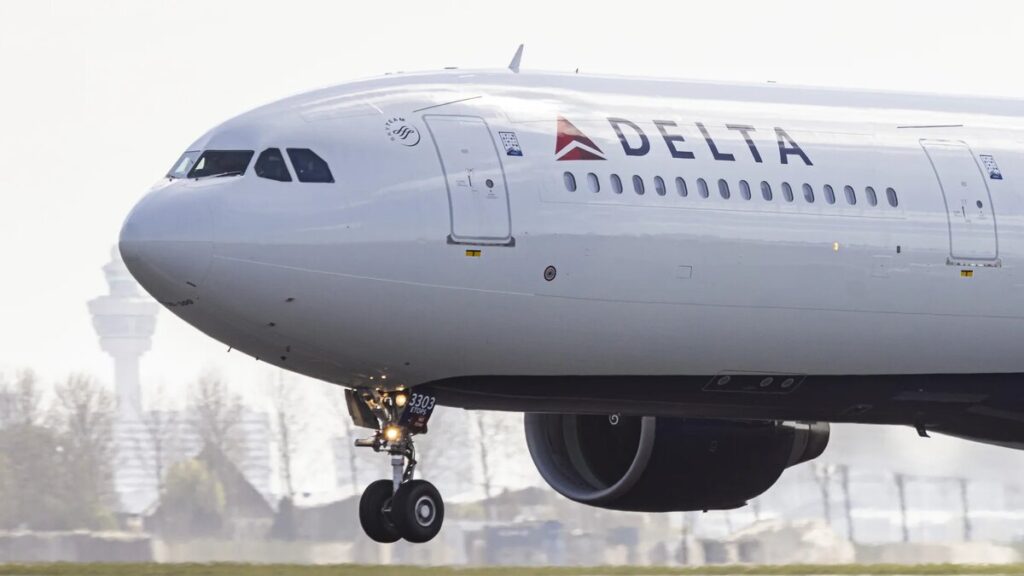Introduction
Delta Airlines Flight DL275 was diverted to Los Angeles International Airport (LAX) after an in-flight engine issue. The diversion was done successfully, and all passengers landed safely. However, it raises concerns of flight safety, costs, and the role of technology in preventing such risks. For passengers, that moment was very stressful, but it also shows the professionalism of Delta’s crew and the alertness of safety protocols.
In this blog we’ll explore why Delta Flight DL275 Diverted LAX, technical details, fiancila impact, engine performance and many more things.
Technical Details of the Engine Malfunction
Investigations revealed that the diversion was caused by an engine malfunction mid-flight. The pilots followed safety procedures, quickly shut down the affected engine, and coordinated with air traffic control, which resulted in a safe landing. Although airplanes are built to fly even if one engine fails, any irregular performance of any important part of the plane is treated as a serious matter.
Timeline of the Delta Flight DL275 Diverted to LAX
The flight departed on time, but abnormal engine readings were detected during the journey. The pilots quickly got the situation and decided to divert to LAX, where emergency teams were prepared. The landing was smooth, and passengers were informed of what was happening. This quick timeline proves how trained crews act to maintain safety in high-pressure situations.

Financial Impact
Flights’ emergency diversions are always costly, and the same thing happened in this case. Industry estimates that a single diversion can cost an airline approximately $10,000 to $200,000, depending on distance and disturbance. Beyond the direct costs such as fuel, compensation, and accommodation, airlines also face reputational risk when such incidents are highlighted.
Engine Performance Data Analysis
Detailed inspection of the incident shows that technical equipment detected unusual readings in engine vibration, pressure levels, and temperature. These irregularities indicates deeper issues, which required immediate action during the flight.
For passengers, terms like “engine vibration” may create panic among them. However, in aviation, such data points are closely monitored to identify even the smallest irregularity before it becomes a risk.
Modern aircraft store vast amounts of data for each flight, and this incident serves as a reminder of the importance of engine performance analysis, which can be utilized not only for post-flight checks but also for real-time monitoring, thereby preventing future diversions altogether.
Predictive Maintenance Savings Potential
Airlines that have adopted predictive systems have saved up to 20% on their maintenance costs. Apart from cost efficiency, this approach helps reduce delays, cancellations, and route changes, thereby providing a seamless experience for passengers. For major carriers like Delta, the long-term benefits include both financial savings and stronger brand trust.
AI-Powered Monitoring Capabilities
AI-powered monitoring combines sensors, big data, and machine learning to track aircraft performance in real-time. These features can detect unusual patterns that human engineers may overlook, and provide 24-hour security. Passengers get safer and more reliable flights, while it helps airlines to reduce operational risks.
Maintenance Approach Comparison
Traditionally, airlines have relied on scheduled maintenance at fixed intervals, whether an aircraft required attention or not. This method is safe, but inefficient and expensive. In contrast, predictive maintenance focuses on the actual health of aircraft systems, determining when which parts need service based on live data.
For example, while conventional systems can demand an engine check every 500 flight hours, predictive systems can identify subtle wear patterns after just 200 hours and can demand servicing as soon as possible. Airlines such as Lufthansa Technik and Emirates are already reaping the benefits of this proactive model, and Delta Air Lines is expected to follow suit following the DL275 diversion.

Industry-Wide Impact and Future Implications
The diversion of DL275 is not an isolated incident; it reflects a broader industry challenge. As airlines use larger fleets and expand international routes, the risk of in-flight malfunctions increases because the aviation industry is rapidly moving towards digital transformation, with predictive maintenance, AI-powered analytics, and advanced monitoring tools at the forefront.
In the long run, passengers will experience fewer cancellations, smoother operations, and greater confidence in air travel.
Leading Airlines Implementing Predictive Technology
Several global airlines are leading the way in adopting predictive technology:
- Delta Airlines has invested in connected aircraft platforms to enhance fleet safety.
- Lufthansa Technik has built advanced maintenance systems that reduce unexpected failures.
- Emirates Airlines is incorporating AI to monitor its wide-body fleet, ensuring maximum efficiency and safety.
Cybersecurity and Regulation
As aircraft become more advanced, they are also becoming more vulnerable to cyber threats. Cybersecurity in aviation is now a major concern, and experts have warned that hackers could potentially target data streams or break surveillance systems. Airlines must strike a careful balance between innovation and security, and ensure that malicious actors cannot abuse technology that is designed to keep flights safe. Strong encryption, adherence to global cybersecurity standards, and continuous monitoring are critical to securing next-generation aircraft.
The Future of Aviation Safety
Ultimately, the DL275 diversion highlights both the strengths and weaknesses of today’s aircraft systems. On the one hand, it shows that Delta Airlines’ safety protocols and crew training are sufficient to effectively handle emergencies. On the other hand, it highlights the need for more proactive, technology-driven solutions that prevent such incidents from happening in the first place.
The future of aviation safety is in the integration of predictive maintenance and artificial intelligence (AI)-powered monitoring. With blockchain-based maintenance logs and strict regulatory standards, the industry is moving towards a future where flight changes due to technical malfunctions could be a rarity rather than a headline-grabbing event.
Conclusion
- The diversion was caused by an engine malfunction, handled effectively by the Delta crew.
- Diversions are costly for airlines, with expenses ranging from $10,000 to $200,000 per incident.
- Predictive maintenance and AI monitoring could have flagged the issue before takeoff, preventing disruption.
- Airlines like Delta, Lufthansa, and Emirates are leading the way in adopting real-time monitoring technologies.
- The future of aviation safety lies in AI-powered systems, cybersecurity protections, and stronger FAA/EASA regulations.
This incident proves that while aviation safety protocols are strong, the industry is moving toward proactive, tech-driven systems to make air travel even safer and more efficient.
FAQ
1. Why was Delta Flight DL275 diverted to LAX?
Delta Flight DL275 was diverted due to an engine malfunction mid-flight, prompting the crew to prioritize passenger safety and land at LAX.
2. How much does a flight diversion cost an airline?
A single diversion can cost $10,000 to $200,000, covering fuel, rebooking, passenger accommodations, and potential reputational loss.
3. What is predictive maintenance in aviation?
Predictive maintenance uses AI, sensors, and real-time data to detect faults before they cause flight disruptions or costly diversions.
4. How does AI improve airline safety?
AI monitors aircraft systems continuously, spotting anomalies like engine vibration or pressure issues early, which prevents mid-air failures.
5. Will predictive technology stop diversions in the future?
Not completely, but it will reduce unexpected diversions significantly, making flights more reliable, efficient, and cost-effective.


1 thought on “Delta Flight DL275 Diverted LAX: Tech & Safety Insights”